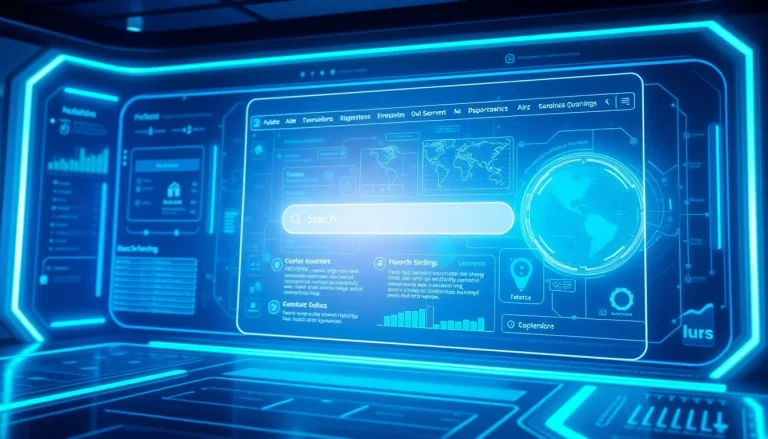
Understanding Agentic Human AI
What is Agentic Human AI?
Agentic Human AI refers to a category of artificial intelligence systems capable of autonomous operation to achieve specific goals without requiring constant oversight from humans. This innovative technology is designed to assess, adapt, and execute tasks based on the context and objectives set before it. Unlike traditional AI, which typically relies heavily on human input or predefined scripts, agentic systems are empowered to learn from their environment and make decisions independently.
At the core of this advancement lies the concept of agency — the ability for AI to act on its own behalf. For more detailed explorations into the nuances and implications of this transformative technology, check out Agentic Human AI. These systems are increasingly viewed as tools for amplifying human capabilities and enhancing efficiency across various sectors.
Key Characteristics of Agentic Systems
Agentic Human AI systems exhibit several defining characteristics that distinguish them from conventional AI solutions:
- Autonomy: The foremost characteristic is their ability to operate independently without constant human input, allowing for smoother integration into workflows.
- Adaptability: They can modify their approaches based on new data or changing environments, which is essential for reacting to dynamic business landscapes.
- Goal-Oriented Behavior: These agents can prioritize tasks and make decisions in pursuit of a defined objective, often optimizing paths towards completing those goals.
- Contextual Understanding: Agentic AI can comprehend complex situations and consider a variety of factors, enhancing its decision-making capacity.
- Learning Capability: Many agentic systems incorporate machine learning techniques, enabling them to improve their performance over time through experience.
Distinctions from Traditional AI
To better appreciate the significance of Agentic Human AI, it is crucial to contrast it with traditional AI. Traditional systems are often designed to handle specific tasks or processes under rigid scenarios and parameters. Here are some key distinctions:
- Dependence on Human Input: Traditional AI typically requires explicit instructions, whereas agentic AI thrives on independence.
- Static vs. Dynamic Operations: Conventional AI may excel in controlled environments, while agentic systems adapt to evolving situations with real-time learning.
- Limited Scope vs. Broader Applications: Agentic systems can engage in a variety of tasks across different domains, which goes beyond the narrow functions of traditional AI.
- Reactive vs. Proactive Decision-Making: While traditional AI reacts to data as it comes in, agentic AI can foresee needs, preparing solutions in advance.
Real-World Applications of Agentic Human AI
Case Studies in Business
Agentic Human AI is reshaping business landscapes across multiple sectors. Major enterprises have begun implementing these technologies to drive innovation. For instance, in the manufacturing sector, agentic systems are utilized for predictive maintenance, where they autonomously monitor equipment, analyze data patterns, and predict failures before they occur, thereby minimizing downtime and enhancing operational efficiency.
Additionally, in customer service, businesses are deploying agentic chatbots capable of understanding and resolving customer queries without human intervention. This not only improves response times but also elevates customer satisfaction as these systems can provide consistent support around the clock.
Impact on Workforce Dynamics
The introduction of Agentic Human AI is transforming workforce dynamics significantly. By automating repetitive tasks, organizations can free their employees to focus on higher-value responsibilities that require creativity, emotional intelligence, and strategic thinking. This shift encourages a more engaged workforce, capable of driving innovation and adapting to consumer needs more promptly.
For instance, in finance, AI algorithms assess countless variables to provide investment recommendations, thus allowing financial advisors to spend time fostering client relationships rather than crunching numbers. The evolution doesn’t eliminate jobs but rather transforms roles, requiring a new skill set that embraces AI technologies.
Adaptation in Varied Industries
The versatile nature of Agentic Human AI means it can be adapted across various industries, such as healthcare, logistics, and retail. For example:
- Healthcare: Agentic AI is used in diagnostics, analyzing patient data to suggest treatment plans, thereby enabling healthcare professionals to make informed decisions more efficiently.
- Logistics: AI systems optimize supply chain management by predicting consumer demand and adjusting inventory levels autonomously.
- Retail: Through behavior analysis, agentic AI personalizes shopping experiences, automatically recommending products aligned with consumer preferences.
Benefits of Integrating Agentic Human AI
Enhanced Decision-Making Processes
One of the most significant benefits of integrating Agentic Human AI into organizational structures is enhanced decision-making capabilities. These systems aggregate and analyze vast amounts of data far beyond human capacity, identifying trends and patterns that inform strategic choices.
For example, an AI platform used in marketing can autonomously analyze customer behavior across multiple channels, providing insights that lead to more effective campaign strategies — thereby optimizing budgets and increasing return on investment (ROI).
Increased Operational Efficiency
By automating routine processes and augmenting workflows, Agentic Human AI significantly increases operational efficiency. Tasks that once required numerous human hours can now be executed in seconds, freeing up valuable time and resources.
In industries like manufacturing, where precision and timely execution are critical, agentic systems can streamline production schedules, minimize waste, and enhance quality control — leading to substantial cost savings and a better bottom line.
Reduction of Human Error
Human error can be a costly problem in any operation. Agentic AI, with its robust analytical capabilities, minimizes such errors by automating processes and executing them consistently with precision. For instance, in financial transactions, AI can execute trades based on predefined criteria without the emotional biases that might cloud human judgment.
Additionally, in healthcare settings, AI-driven systems enhance accuracy in diagnostics and treatment recommendations by relying on extensive data rather than subjective interpretations. This not only improves outcomes but can also save lives.
Challenges and Considerations
Ethical Implications
While Agentic Human AI promises remarkable advantages, it also raises significant ethical considerations. Issues like accountability for AI-driven decisions can create complex dilemmas. For instance, if an autonomous vehicle is involved in an accident, determining liability is challenging and can lead to lengthy legal disputes.
Organizations must develop ethical frameworks and guidelines for deploying these systems responsibly, ensuring transparency and fairness in their decision-making processes. Public perception can also be a hurdle, as individuals may express concerns over privacy and bias implicated in AI outputs.
Data Privacy and Security
The reliance of agentic systems on vast datasets raises heightened concerns regarding data privacy and security. Protecting sensitive information, especially in sectors like healthcare and finance, is paramount. Organizations must employ rigorous data governance practices that conform to regulations such as GDPR or HIPAA to safeguard personal data.
Moreover, as these systems collect and process data, they must be designed with robust cybersecurity measures to prevent breaches that could compromise user information.
The Importance of Human Oversight
Although agentic systems operate with a high degree of autonomy, the importance of human oversight cannot be overstated. AI is not infallible and can make erroneous decisions if presented with biased data or flawed algorithms. Responsible AI implementation must include mechanisms for human intervention where necessary, ensuring a balance between automation and human judgment.
Training staff to understand how to work collaboratively with AI systems is essential, fostering an environment where AI acts as an augmentation to human capabilities rather than a replacement.
The Future of Agentic Human AI
Predicted Trends and Developments
The trajectory of Agentic Human AI is likely to see significant advancements in the coming years. Key predictions surround its increasing integration into more complex and sensitive operations, as well as enhancements in natural language processing capabilities to facilitate better human-AI interactions.
Furthermore, improvements in machine learning algorithms will drive agentic systems to become even more adept at learning from their surroundings and performing tasks with minimal human interest.
Potential Impact on Employment
The integration of Agentic Human AI is set to transform employment landscapes. While some jobs may become obsolete, new opportunities will arise that focus on managing, designing, and overseeing AI systems. The demand for skilled professionals in tech-centric roles will likely increase, emphasizing the importance of reskilling and upskilling the workforce.
Organizations will need to invest in training programs that prepare employees for new job functions that will coexist with AI, creating a synergistic relationship that leverages technology for enhanced productivity.
How to Prepare for an AI-Driven Future
To effectively navigate the transition to an AI-driven future, businesses must adopt a proactive approach. This involves:
- Investing in Technology: Stay abreast of the latest AI advancements and consider integrative solutions that align with business goals.
- Fostering a Culture of Learning: Encourage continuous education and training that allows employees to adapt and thrive in an increasingly automated environment.
- Implementing Ethical Guidelines: Develop a robust ethical framework for AI use that prioritizes transparency and safeguards user privacy.
- Engaging with Stakeholders: Foster conversations among stakeholders — including employees, customers, and regulatory bodies — to collaboratively address concerns and aspirations regarding AI adoption.






